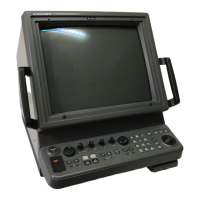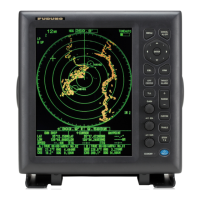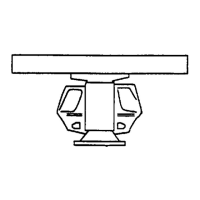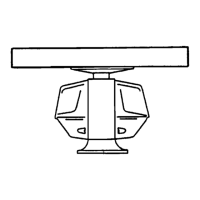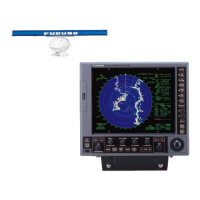What to do if Furuno Marine Radar won't transmit after warm-up?
- LLauren BurnsJul 30, 2025
If your Furuno Marine Radar doesn't transmit after warming up, the issue might be with the scanner unit. In this case, it is best to request service.
What to do if Furuno Marine Radar won't transmit after warm-up?
If your Furuno Marine Radar doesn't transmit after warming up, the issue might be with the scanner unit. In this case, it is best to request service.
What to do if Furuno Marine Radar key is faulty?
If a key on your Furuno Marine Radar seems faulty, it may require professional attention. Request service to resolve the issue.
How to troubleshoot Furuno Marine Radar when the [POWER] key is pressed but it doesn't turn on?
If your Furuno Marine Radar doesn't turn on when you press the power key, here are a few things you can check: * Try adjusting the control panel back-lighting on the OTHERS menu. * The battery may have discharged, so ensure it's properly charged. * Check the fuse in the power cable to see if it has blown.
Hazards associated with radar's radio frequency emissions.
Critical safety warnings and precautions for operation.
Statement of compliance with European radio equipment directives.
How SART signals appear on the radar screen.
Summary of methods, remarks, range scale, and errors for SART detection.
Highlights the main capabilities and advantages of the radar.
Explains what radar is and how it determines range and bearing.
Describes the Plan Position Indicator (PPI) display.
Describes ships' positioning methods before radar invention.
Notes speed comparison between waves and antenna rotation.
Details the functions of the radar's control panel.
Explains symbols and information shown on the radar screen.
Steps for turning the radar on/off and entering stand-by mode.
How to start radar transmission after warm-up.
Adjusts display range and picture brightness.
Optimizes receiver gain and reduces sea clutter.
Using A/C RAIN control to minimize unwanted rain clutter.
Selects display orientation and magnifies echoes.
Erasing heading and north markers for improved visibility.
Using cursor, EBL, and VRM to measure range and bearing.
Predicts collision course and measures between targets.
Moves and magnifies the radar display for better viewing.
How to access and use the radar's menu.
Using index lines to maintain constant distance to ships or coastlines.
Reducing radar interference and selecting pulsewidth.
Showing GPS/Loran information on the radar display.
Visualizing target movement history for collision avoidance.
Setting up alarm zones to detect threats.
Periodic radar checks for target activity in a guard zone.
Detailed description of miscellaneous menu settings.
Customizing function keys and adjusting marker brilliance.
Suppressing echoes and outputting target position data.
Optimizing receiver performance for clear signals.
Explains multiple, side-lobe, and indirect false echoes.
Understanding areas of signal blockage in radar coverage.
Routine checks and fuse replacement for equipment upkeep.
Guide to diagnosing and resolving operational problems.
Performing self-tests and information on magnetron lifespan.
General introduction to the ARP-10 auto plotter.
Explanation of touchpad keys used with the auto plotter.
Steps to enable and set up the auto plotter.
Manual and automatic procedures for acquiring radar targets.
Terminating tracking and displaying target data.
Configuring target vectors to predict collision risks.
Overview of radar systems, range, resolution, and scanner unit details.
Technical specifications of the radar transceiver and display unit.
Operating conditions, power, dimensions, and compass safe distances.
Technical details of the optional ARP-10 auto plotter module.
Official declaration of compliance for the FR-7062 model.
Official declaration of compliance for the FR-7112 model.
Official declaration of compliance for the FR-7252 model.
Hazards associated with radar's radio frequency emissions.
Critical safety warnings and precautions for operation.
Statement of compliance with European radio equipment directives.
How SART signals appear on the radar screen.
Summary of methods, remarks, range scale, and errors for SART detection.
Highlights the main capabilities and advantages of the radar.
Explains what radar is and how it determines range and bearing.
Describes the Plan Position Indicator (PPI) display.
Describes ships' positioning methods before radar invention.
Notes speed comparison between waves and antenna rotation.
Details the functions of the radar's control panel.
Explains symbols and information shown on the radar screen.
Steps for turning the radar on/off and entering stand-by mode.
How to start radar transmission after warm-up.
Adjusts display range and picture brightness.
Optimizes receiver gain and reduces sea clutter.
Using A/C RAIN control to minimize unwanted rain clutter.
Selects display orientation and magnifies echoes.
Erasing heading and north markers for improved visibility.
Using cursor, EBL, and VRM to measure range and bearing.
Predicts collision course and measures between targets.
Moves and magnifies the radar display for better viewing.
How to access and use the radar's menu.
Using index lines to maintain constant distance to ships or coastlines.
Reducing radar interference and selecting pulsewidth.
Showing GPS/Loran information on the radar display.
Visualizing target movement history for collision avoidance.
Setting up alarm zones to detect threats.
Periodic radar checks for target activity in a guard zone.
Detailed description of miscellaneous menu settings.
Customizing function keys and adjusting marker brilliance.
Suppressing echoes and outputting target position data.
Optimizing receiver performance for clear signals.
Explains multiple, side-lobe, and indirect false echoes.
Understanding areas of signal blockage in radar coverage.
Routine checks and fuse replacement for equipment upkeep.
Guide to diagnosing and resolving operational problems.
Performing self-tests and information on magnetron lifespan.
General introduction to the ARP-10 auto plotter.
Explanation of touchpad keys used with the auto plotter.
Steps to enable and set up the auto plotter.
Manual and automatic procedures for acquiring radar targets.
Terminating tracking and displaying target data.
Configuring target vectors to predict collision risks.
Overview of radar systems, range, resolution, and scanner unit details.
Technical specifications of the radar transceiver and display unit.
Operating conditions, power, dimensions, and compass safe distances.
Technical details of the optional ARP-10 auto plotter module.
Official declaration of compliance for the FR-7062 model.
Official declaration of compliance for the FR-7112 model.
Official declaration of compliance for the FR-7252 model.
| Brand | Furuno |
|---|---|
| Model | FR-7062 |
| Category | Marine Radar |
| Language | English |


